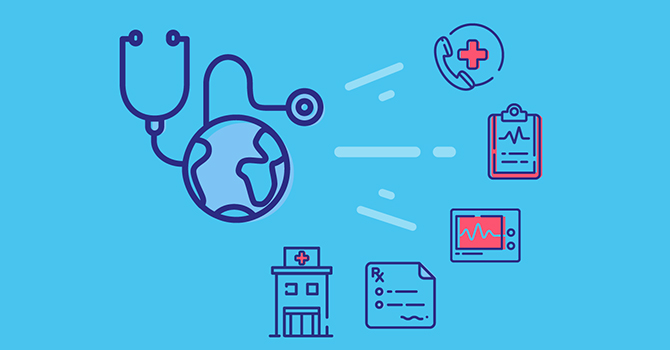The Significance of Healthcare RCM in Enhancing Capital and Effectiveness
The Significance of Healthcare RCM in Enhancing Capital and Effectiveness
Blog Article
A Comprehensive Overview on How Medical Care RCM Functions to Simplify Payment and Collections
Browsing the intricacies of healthcare earnings cycle management (RCM) is important for providers intending to enhance their payment and collections procedures. The overview unloads the complexities of RCM, from person registration to accounts receivable administration, supplying understandings into enhancing each step.
Understanding Income Cycle Administration
RCM is an important administrative feature that encompasses the whole economic procedure of patient treatment, from the initial visit establishing to the final repayment of the equilibrium. It is a complex treatment created to recognize, gather, and manage the revenue from the solutions supplied to clients.
The RCM process starts when an individual timetables an appointment and prolongs with the client's care trip, consisting of payment and collections. A crucial objective is to lower the time between offering a solution and getting repayment, hence improving the company's monetary health. RCM includes various features such as client registration, insurance verification, charge capture, coding, asserts entry, payment publishing, and dealing with denials and charms.
Secret Parts of RCM
In the world of Revenue Cycle Management (RCM), recognizing its essential elements is basic to achieving economic performance within healthcare companies. RCM is an extensive process that incorporates different stages, each vital to ensuring effective payment and collections. The main components include client registration, insurance coverage verification, fee capture, coding, case entry, payment publishing, and balance due management.


As soon as coded, claims are sent to payers, where accuracy is critical to avoid rejections or delays - Healthcare RCM. Repayment uploading entails videotaping the received repayments, which enables the reconciliation of accounts. Finally, balance dues monitoring concentrates on monitoring and attending to unsettled insurance claims, making sure timely follow-up and resolution
Each component of RCM is interconnected, and ineffectiveness in any component can interfere with the whole cycle. For that reason, grasping these components is crucial for doctor to optimize revenue and improve their monetary health.
Strategies for Efficient Billing

Systematizing invoicing treatments across the organization is an additional vital method. Establishing clear guidelines for paperwork, coding, and submission aids maintain consistency and conformity with governing requirements. Educating team Check Out Your URL frequently on these procedures guarantees every person is current with the newest adjustments in payment codes and payer policies.
Accurate charge capture is necessary in protecting against profits leakage. Applying routine audits and monitoring systems permits the identification and adjustment of inconsistencies prior to they impact profits. In addition, maintaining open lines of interaction with payers helps to swiftly deal with any conflicts or misunderstandings that might arise.

Finally, interesting patients early in the billing procedure by providing clear price quotes and instructional products concerning their monetary obligations can dramatically reduce confusion and enhance settlement timeliness. These techniques jointly add to a more monetarily healthy and efficient billing system.
Enhancing Collections Processes
A durable collections process is vital for keeping monetary security within medical care companies. Offered the intricacies of clinical payment and the range of payer requirements, boosting the collections process includes implementing strategic procedures that visit this site ensure accurate and prompt settlement of services made. Central to this is making use of technology to automate and enhance procedures, decreasing hand-operated errors and boosting performance. Automation tools can assist in tracking case conditions, sending timely reminders to people, and taking care of rejections better.
Clear and clear person interactions are crucial. Supplying thorough descriptions of charges and using adaptable payment strategies can boost person satisfaction and prompt repayments.
Regular audits of the collections procedure must be conducted to determine areas for renovation and ensure compliance with policies. By assessing information, medical care organizations can recognize trends, anticipate possible concerns, and adapt approaches appropriately (Healthcare RCM). Ultimately, a well-enhanced collections process not just sustains economic health and wellness yet likewise adds to a more seamless experience for people and staff alike
Optimizing Profits Streams
Building upon the foundation of a strong collections process, healthcare companies can better bolster their economic stability by purposefully enhancing earnings streams. This involves a multi-faceted method, starting with an extensive evaluation of existing revenue resources to determine inefficiencies and locations for growth. Employing advanced data analytics tools allows companies to obtain understandings into payer mix, individual demographics, and service usage patterns, enabling data-driven choices that enhance profits capture.
Implementing automated billing systems can dramatically decrease errors and accelerate cases refining, guaranteeing that earnings is collected a lot more successfully. Additionally, optimizing payer agreements via regular settlements can improve compensation prices and terms, straight influencing the lower line. Expanding solution offerings, such as including telehealth or health programs, can also draw in a broader client base, therefore raising profits possibility.
Another critical part is improving client interaction and complete satisfaction, as completely satisfied clients are most likely to stick to therapy strategies and make prompt repayments. Using versatile repayment options and transparent payment practices can enhance collections and foster click to read individual commitment. Healthcare RCM. By embracing these methods, medical care organizations can create a much more resistant monetary framework, making certain sustained development and security in an ever-changing sector landscape
Verdict
Finally, health care Profits Cycle Management (RCM) plays a critical function in maximizing payment and collections procedures by integrating crucial parts such as client enrollment, insurance confirmation, charge capture, coding, asserts submission, and receivable management. By using sophisticated modern technology, standardizing treatments, and promoting individual engagement, health care carriers can substantially lower claim rejections, increase payment cycles, and improve capital. This detailed method to RCM eventually causes improved financial effectiveness and sustainability for medical care organizations.
The RCM process starts when a client routines a visit and expands through the client's treatment trip, consisting of billing and collections.One more vital component is improving patient engagement and satisfaction, as pleased individuals are more likely to adhere to therapy strategies and make timely repayments. Offering adaptable payment choices and clear invoicing methods can enhance collections and foster individual commitment.In final thought, health care Revenue Cycle Monitoring (RCM) plays a critical function in enhancing invoicing and collections procedures by incorporating crucial components such as person registration, insurance coverage verification, charge capture, coding, claims submission, and accounts receivable administration. By utilizing advanced technology, standardizing treatments, and cultivating person involvement, medical care carriers can considerably decrease claim denials, increase repayment cycles, and boost cash money circulation.
Report this page